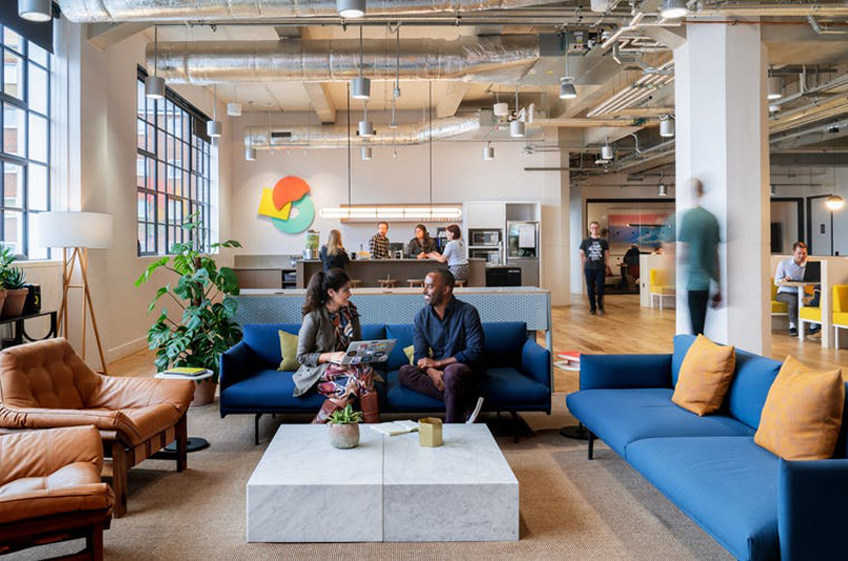Table of Contents
In today&8217;s fast-paced world, the quest for enhanced comfort and productivity has never been more critical. Innovations in workspaces and living areas are reshaping our environments, making them more efficient, enjoyable, and conducive to well-being.
Smart Furniture
Smart furniture is at the forefront of the innovation wave, offering a fusion of technology and ergonomics to revolutionize everyday living and working environments. Imagine a desk that adjusts its height based on your posture and preferences, a chair that provides real-time feedback on your sitting habits, or a bed that tracks your sleep patterns and adjusts for optimal rest. These smart pieces not only enhance comfort but also contribute significantly to productivity by promoting healthier habits.
For instance, companies like Steelcase have developed intelligent office chairs that adapt to the user’s body movement, reducing strain and increasing comfort during long working hours. Meanwhile, sleep-tech companies like Sleep Number offer smart beds that can automatically adjust firmness and support based on individual sleep patterns. Integrating such smart furniture into workspaces and living areas means environments can now dynamically adapt to individual needs, promoting overall well-being and improved performance.
Biophilic Design
Biophilic design seeks to reconnect people with nature within built environments, significantly boosting both emotional well-being and productivity. This design principle integrates natural elements like plants, water features, and daylight into interiors to create a harmonious and pleasing atmosphere. Studies have shown that the presence of greenery in workspaces can reduce stress and improve focus, which directly translates to increased productivity. Living areas designed with biophilic principles often feature large windows to maximize natural light, indoor gardens or vertical green walls, and the use of natural materials such as wood and stone. These elements not only enhance aesthetic appeal but also contribute to better air quality and a sense of tranquility. Companies like Google and Amazon have adopted biophilic design in their offices, providing employees with spaces that inspire creativity and maintain mental well-being. By bringing elements of the natural world indoors, biophilic design helps create spaces where people can thrive both personally and professionally.
Flexible Workspaces
The concept of flexible workspaces is transforming how we approach productivity and collaboration in professional settings. Unlike traditional office layouts, flexible workspaces provide a variety of environments within a single office, catering to different tasks and working styles. These spaces often include open-plan areas for collaboration, quiet rooms for focused work, and informal lounges for relaxation and casual meetings. This adaptability ensures that employees can choose the setting that best suits their current task, leading to enhanced efficiency and satisfaction. Technologies such as hot-desking systems and mobile workstations allow for seamless transitions between different areas, making flexibility a reality. Additionally, flexible workspaces can be a cost-effective solution for companies, reducing the need for large, underutilized office spaces. They also promote a healthier work-life balance, as employees have the freedom to choose their work environment, including options for remote work. The rise of co-working spaces like WeWork exemplifies this trend, offering communal environments that cater to various professional needs and fostering a culture of innovation and collaboration.
Ergonomic Innovations
Ergonomics has long been a critical factor in workspace design, but recent innovations are pushing the boundaries to offer even more personalized and effective solutions. Modern ergonomic furniture and tools are designed to support the body in its natural posture, minimizing strain and preventing injuries associated with prolonged sitting and repetitive tasks. For example, adjustable standing desks allow users to alternate between sitting and standing positions throughout the day, promoting better circulation and reducing fatigue. Future-forward ergonomic chairs with advanced lumbar support can be fine-tuned to the user&8217;s specific body shape, providing maximum comfort during extended periods of use. Other innovations include keyboard and mouse designs that reduce wrist strain and monitor stands that ensure screens are at eye level to prevent neck pain. Ergonomic principles are also finding their way into home environments, with adjustable chairs and workstations becoming common in home offices. The application of ergonomics in workspaces and living areas goes beyond physical health, as it fosters a more productive and comfortable environment, ultimately enhancing the quality of life.
Integrated Technology
Integrated technology is seamlessly embedding itself into our workspaces and living areas, creating smart environments that are intuitive and efficient. Innovations such as IoT (Internet of Things) and AI (Artificial Intelligence) are leading this transformation. Smart lighting systems, for instance, can adjust brightness and color temperature based on the time of day, activities, or personal preferences, thereby improving mood and productivity. Voice-activated assistants like Amazon Alexa or Google Home can control various devices, from thermostats and lights to multimedia systems, making it easy to create a customized living or working environment with minimal effort. In workspaces, the use of advanced communication tools like Slack or Microsoft Teams facilitates seamless collaboration, regardless of physical location. Furthermore, intelligent climate control systems ensure optimal temperature and air quality, enhancing comfort and focus. Integrated technology not only simplifies many aspects of daily routines but also enables a more connected and efficient lifestyle. As these technologies continue to evolve, they promise to create even smarter, more responsive environments that cater to our dynamic needs.
By embracing these cutting-edge innovations, we are not only enhancing comfort and productivity but also paving the way for a future where our environments adapt to us, promoting a healthier, more efficient, and enjoyable lifestyle.
